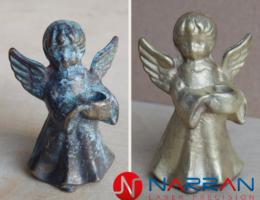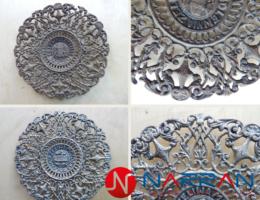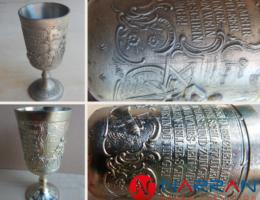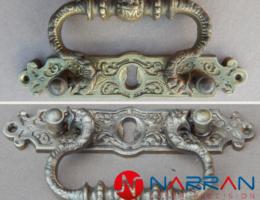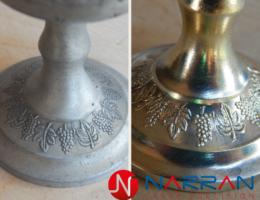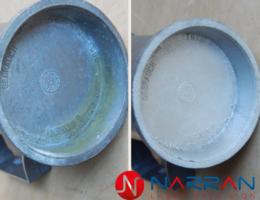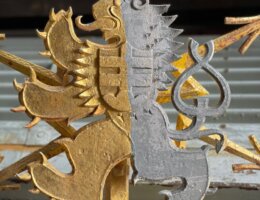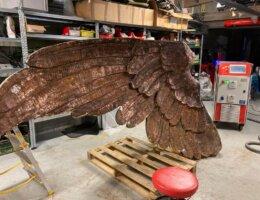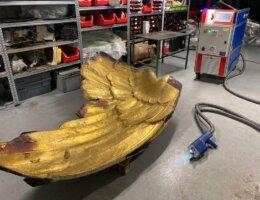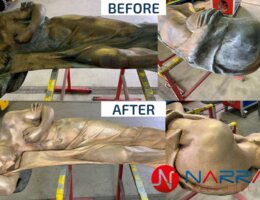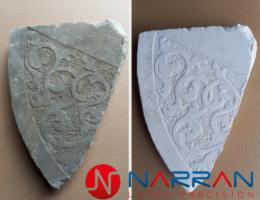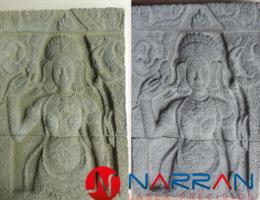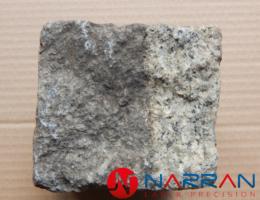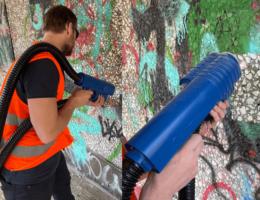Restoration using a pulsed cleaning laser
Restoration, graffiti, dirt or soot removal, none of this is a problem for the ROD cleaning system. The laser is particularly suitable for very sensitive restoration of monuments or historical objects.
HOW LASER CLEANING WORKS
Laser cleaning (laser ablation) – uses hundreds of thousands of laser pulses per second to absorb impurities and remove (vaporize) from the substrate without damaging the base material. With no additional waste and no risk when used correctly, laser systems are the ideal cleaning solution for applications where preservation of the original material is key. Laser cleaning has consistent quality and operational life of up to hundreds of thousands of cleaning hours – making it a cost-effective solution for cleaning metals and non-metals, masonry, sandstone, granite, stone and many others.
ADVANTAGES OF LASER RESTORATION
The most common benefits of laser applications in the restoration industry include:
METAL RESTORATION
RUST REMOVAL
One of the most common applications of laser solutions is rust removal. This is done to prepare for welding or bonding, to improve efficiency or to restore products such as historic buildings to their original beauty. Some of the most common metals that can rust include iron, cast iron, wrought iron, and steel.
OXIDATION REMOVAL
Laser is an efficient rust removal method, it might be also used to remove oxide coating from metals that contain no iron. Oxides can change the integrity of your product in a negative way, they cause your product to break down and plain removing of this oxidation layer will expose it to further damage. Laser cleaning doesn’t only remove the oxidation layer, but also completely removes the contaminating oxides from your product – protecting it from further damage. The most common metals include aluminum, bronze, copper, gold and platinum.
REMOVAL OF SURFACE FINISHES OF VARIOUS METALS
So-called decoating allows you to simply remove unwanted surface treatment, varnish, paint or even a thin layer of another material (e.g. gold). After laser cleaning, you are left with only the original material ready for another finishing.
Photo source: Restolaser.com (Narran ROD 200 system, museum use for restoration of monuments)
STONE MONUMENTS AND ARTWORK
Sandstone, limestone sandstone, marble, red limestone and other light-coloured stone types show very successful results after laser cleaning.
In the field of preservation/cleaning, the most important parameters determining the conditions are the type of stone and the nature of its surface.
The characteristics of the layers (e.g. black crust, dust deposits, fire soot, salts) to be removed by the laser system are also important, particularly for the effect and speed of the cleaning process.
The interactions and effects between the laser beam and any surfaces of historic buildings, monuments or artwork that will be cleaned by the laser are also important.
Photo sources: Customer/partner Swisspowerwash.ch (Narran ROD 500 system, use as a service primarily in the field of blasting, stone cleaning)
Customer bauing.cz (Narran ROD 500 system, use as a service primarily in the construction industry)
Customer Restolaser.com (Narran ROD 200 system, museum use for restoration of monuments)
DECONTAMINATION/SOOT REMOVAL
Laser cleaning is extremely effective for removing fire-caused soot. Black has the characteristic of absorbing practically all light rather than reflecting it. Short laser pulses get absorbed into the soot, causing it to quickly and intensely heat up and evaporate. Brick, tile, painted surfaces, wood and steel beams, as well as ornamental and architectural features, can all be cleaned of smoke damage in a precise and selective way.
Video source: customer/partner Laserindustries.com.au (system Narran ROD 200, 300, 500 a 1000, general service use, laser distribution)
Facade restoration
The laser can efficiently restore the masonry’s original appearance by removing even deeply embedded dust deposits, particularly from brick or stone facades.
Video source: Customer cleaninglaser.nl (Narran ROD 500 system, use as a service (cleaning of metal parts especially in the shipping industry, cleaning of facades, general service, …)
WOOD RESTORATION
When properly adjusted, the laser is able to remove a layer of varnish/paint or soot from various types of wood surfaces
Video source: customer/partner mehrlaser.at (Narran ROD 500 system, use as a general service for various applications)

